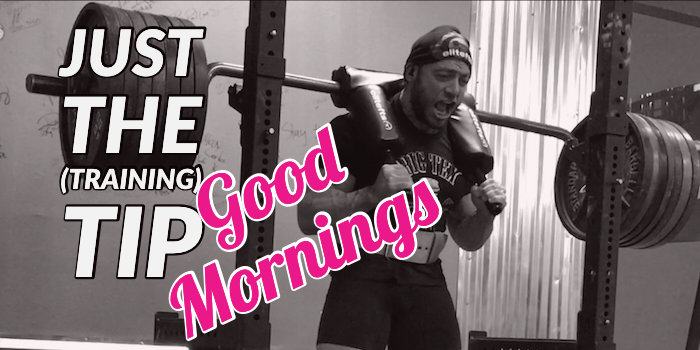
The Just the (Training) Tip series is a collection of short articles that can make a big difference in your training. Check out past installments:
The good morning is one of the single most effective movements a strength athlete can perform. It’s also one of the most controversial, and I think that's largely because lifters don't know which style of good morning is most appropriate to their situation.
There are TONS of different good morning variations you can choose from, but if you want to get anything out of any of them, you have to have a strong understanding of your strengths, weaknesses, and goals. Otherwise, you're wasting your time, and maybe even risking injury.
If you're a beginner, you might have a hard time breathing and bracing correctly. If that's the case, you won't be able to stay in safe position in the good morning while using heavy weights, because you'll shift too much of the load away from your hips and core and on to your lumbar spine. So I suggest most beginners (and many intermediates) train the good morning as a light assistance movement.. My preference: use the stiff-legged variation with a straight bar, using anywhere between 45-135 pounds depending on your strength level, for 4-5 sets of 8-12 reps.
Advanced lifters should use the good morning as a primary strength movement. However, you still need to be smart about why you’re using them. For example, if you’re a very quad-dominant lifter, you should use the good morning frequently, to bring up your relatively weak posterior chain. Of course, you'll have to start lighter than a posterior-chain dominant lifter. Posterior-chain dominant lifters might be better off using the good morning as a mental break from heavy squats and deadlifts, rather than including them as a programming mainstay. Instead, spend that time and effort on movements that more directly address your own weaknesses, whether that means quad strength or something else.









2 Comments